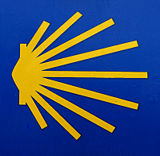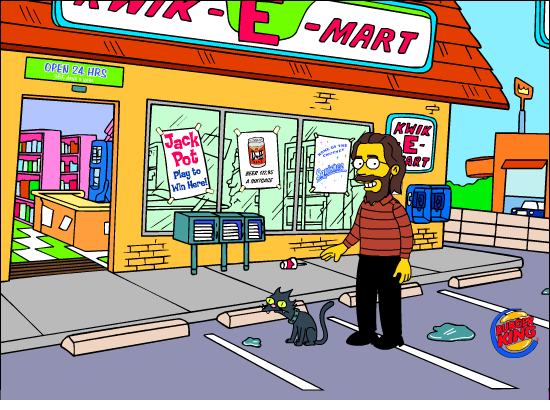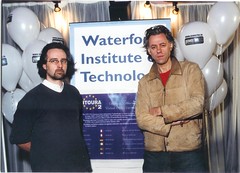13 March 2012
Google Scholar Page
I just enabled my Google Scholar Page: Mícheál Ó Foghlú - Google Scholar Citations.
I had previous enabled by ACM personal profile: Mícheál Ó Foghlú - ACM Author Page.
3 July 2011
Tall Ships in Waterford
Waterford had a very busy weekend from Thursday 30th June 2011 to Sunday 3rd July 2011 as the quays in the city centre hosted the start of the Sail Training Interational Tall Ships Race 2011.
I was up early on Sunday morning, standing on the green road between Cheekpoint and Passage East, to see the parade of sail as the ships came past to Dunmore East. This Flickr Set of photos captures most of the tall ships as they passed by.
24 May 2008
Camino-Waterford (May 2008)

Over the past two weeks I have travelled on the Camino Santiago (the way of St James) from Waterford to Santiago de Compostela, in Galicia, Spain. The route involved sailing on board the Jeanie Johnston (a replica 19th century wooden hulled sailing ship --- as close to medieval as we could get) from Waterford quay, out of the Waterford estuary, and the southwards past the Scilly Isles and across the Bay of Biscay to A Coruña on the north coast of Galicia; this was a journey of 4 days. The next section was on foot from A Coruña to Santiago de Compostela over 3 days. Finally we spent a few days in Santiago before flying back a more conventional twenty first century route to Dublin airport.
The journey was a recreation of the pilgrimage taken by a previous Mayor of Waterford City in 1473 and 1483, James Rice. This route was known in Medieval times as the "English Way", which was an alternative to the more famous land routes to Santiago such as the French routes that cross the Pyrenees and converge near Pamplona, or the internal Iberian (Spanish and Portuguese) routes coming from the south.
I have posted three sets of public photographs (as yet undocumented) on the Flickr photo sharing site, and I've made this available to everyone so that the people I travelled with can have easy access to them:
- Camino-Waterford Preamble (a small number of photographs taken on my camera phone during and after the ceremony in Christ Church Cathedral where Mary O'Halloran, the Mayor of Waterford, sent us on our way)
- Camino-Waterford Voyage (photographs taken with my Cannon 400D SLR with a Sigma 30mm F1.4 EX DC prime lens)
- Camino-Waterford Walk (photographs taken with my Cannon 400D SLR with a Sigma 30mm F1.4 EX DC prime lens)
I found the camino to a be a fantastic experience, particularly because of the people who we travelled with on the ship, and on foot. So a big thanks to my fellow pilgrims: Eamonn, John (of the shell), Jackie, Nina, Mary, Anne, Paddy, Pat, Jim, Oliver, Brian, Aidan and Tim; a big thanks to our fellow travellers on the ship: Sean, John, Pat, Maeve, Coleman, Stephen and Steve; a big thanks to the captain, officers and crew of the Jeanie Johnston (the captain, Luca, Paul, Daithi, , Quentin, Jim, Charlie, Suzie, Earl, Karen, Pat and Johnnie). The trip was organised by the Waterford Museum of Treasures, who placed this article (worth reading for some historical background on James Rice who made the pilgrimage in 1473 and 1483) in the local newspaper the Munster Express; so a special thanks to Eamonn and Donnchadh for making it all possible.
References
- Edwin Mullins, 1974, The Pilgrimage to Santiago (the best book I have found about the pilgrimage which, though it focuses on the route from Paris over land, covers much of the history and context for the growth and decline in popularity of the pilgrimage).
- Camino de Santiago A practical blog about doing the walking pilgrimage today.
15 August 2007
Simpsonized

So, as I take some summer holidays, I am pleased to report that have been Simpsonized. Thanks to John Breslin. I will return to reality shortly.
24 February 2007
Blog Migration
This blog has been migrated to a new host, running an updated version of Movable Type. If there are any problems you spot let me know. Thanks.
12 October 2006
IFUP-ICT Contacts
At IFUP-ICT I met with Richard Kettner-Polley from the Colorado Technical University, Institute for Advanced Studies Colorado Technical University's Institute For Advanced Studies | Colorado Masters Degree | Colorado Doctorate Degree. It is very interesting to hear how they are creating doctoral programmes linking Computer Science and Management particularly through the EIS programme (Enterprise Information Systems).
I have always felt that there is a tension between the academic imperatives of doctoral programmes, and the undersatnding of the applied industrial nature of the domain, this is another attempt to resolve these tensions.
28 March 2006
HEAnet thrash Sun Niagara T2000
Good to see HEAnet doing some serious machine thrashing: /~colmmacc/ サ Blog Archive サ Niagara vs ftp.heanet.ie Showdown. Keep up the good work Cormac.
ftp.heanet.ie is one of the single busiest webservers in the world. We handle many millions of downloads per day, but unusually for a high-demand site, we do it all from one machine. This is usually a bad idea, but as a mirror server has built-in resilience (in the form of a world-wide network of mirrors), and as we can't afford 20 terabytes of ultra-scalable, network-available storage, we use a single machine with directly attached storage, and rely on our ability to tune the machine to within an inch of its life. We regularly serve up to 1.2 Gigabit/sec, and have handled over 27,000 concurrent downloads. There's some more detail on our previous set-up (which is mostly identical to the current one) in my paper on Apache Scalability.
Over four years ago, when I started in HEAnet, Solaris and Sparc hardware represented about 50% of our Unix systems. Now it represents less than 2%, so I've had less and less opportunity to tinker on Solaris in the last few years, but have kept up with it enough to know how to use dtrace, and to still understand the Solaris fundamentals. At ApacheCon US 2005, Covalent had a T2000 along as a demonstration machine. I got to play with it a little and was very impressed. Unlike prior experiences, this machine felt very responsive. There was no waiting for the output of commands, no listening to the whirring of hard disks, and the benchmarking numbers it was producing weren't bad either.
When Jonathan Schwartz announced the "Free Niagara box for 60 Days" deal, we jumped at the opportunity to test one of the these boxes - which may be ideal for our needs. It took a while for Sun to iron out some administrative problems, but they certainly held up their end of the deal, and a nice shiny T2000 arrived a little over a week ago, for us to try out.
23 March 2006
Bloginfluence
Just read Sean's post Sean McGrath, CTO, Propylon
It desribes a new service to rate your blog's influence using a formula:
[(blog posts web links) (bloglines subs * 2)] * 1 (Pagerank/10)
Couldn't resist and added a link at the bottom of the list of links in the left pane of my home page :-) - my rating is lower than Sean's at 4176!
10 September 2005
Bob Geldof
A few years ago, when I was promoting a project in the TSSG called NITOURA II, I had the pleasure of having my photograph taken with one of my childhood heroes Bob Geldof. Yes, I was one of those kids who liked the Boomtown Rats and bought all their albums and translated "I don't like Monday's" into Irish so I could sing it in the Gaeltacht (Irish school children often go to Irish-speaking areas in the holidays to help learn Irish and agree to only use Irish for the duration of the course - usually a few weeks).I admire Bob for a number of reasons, first he helped make it cool to be an Irish punk/pop/rock singer, second he helped make a difference in the world based on what he believed (in terms of Feed the World and Live Aid and more recently Make Poverty History), and finally he has tried to engage in the economy in a wide range of ventures many of which have generated wealth and created employment. It was largely his latter role as a entrepreneur with an interest in Information Communications Technology (ICT) ventures that led him to Waterford in Feb 2002 (when this photograph was taken). He was promoting a local company who were bidding for a regional radio license (Power FM) - though in the end they didn't get this license - and he was promoting entrepreneurial research activities linked to Waterford Institute of Technology at the same time.
Anyway, thanks again Bob for all you've contributed to the entertainment, development and business communities.

